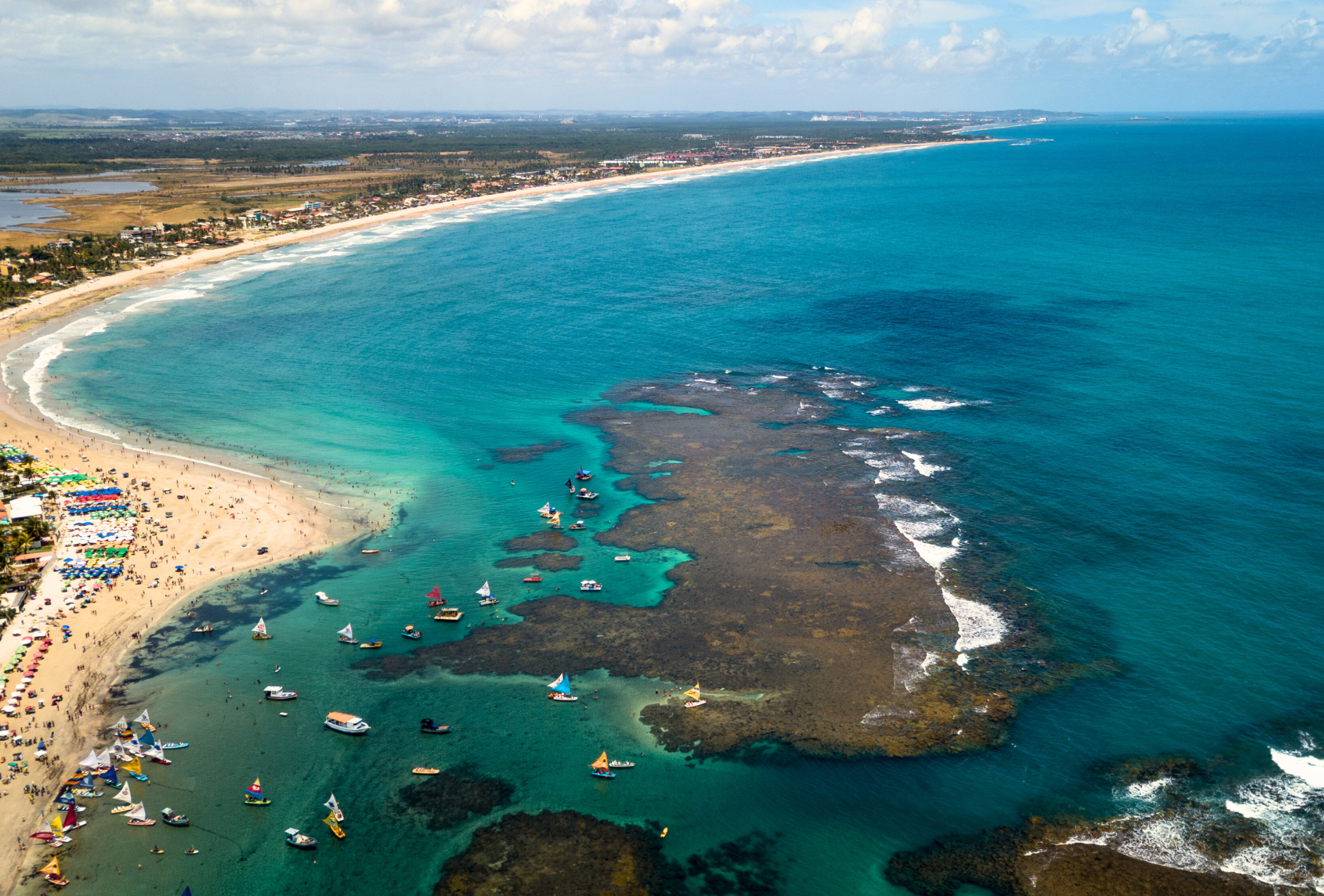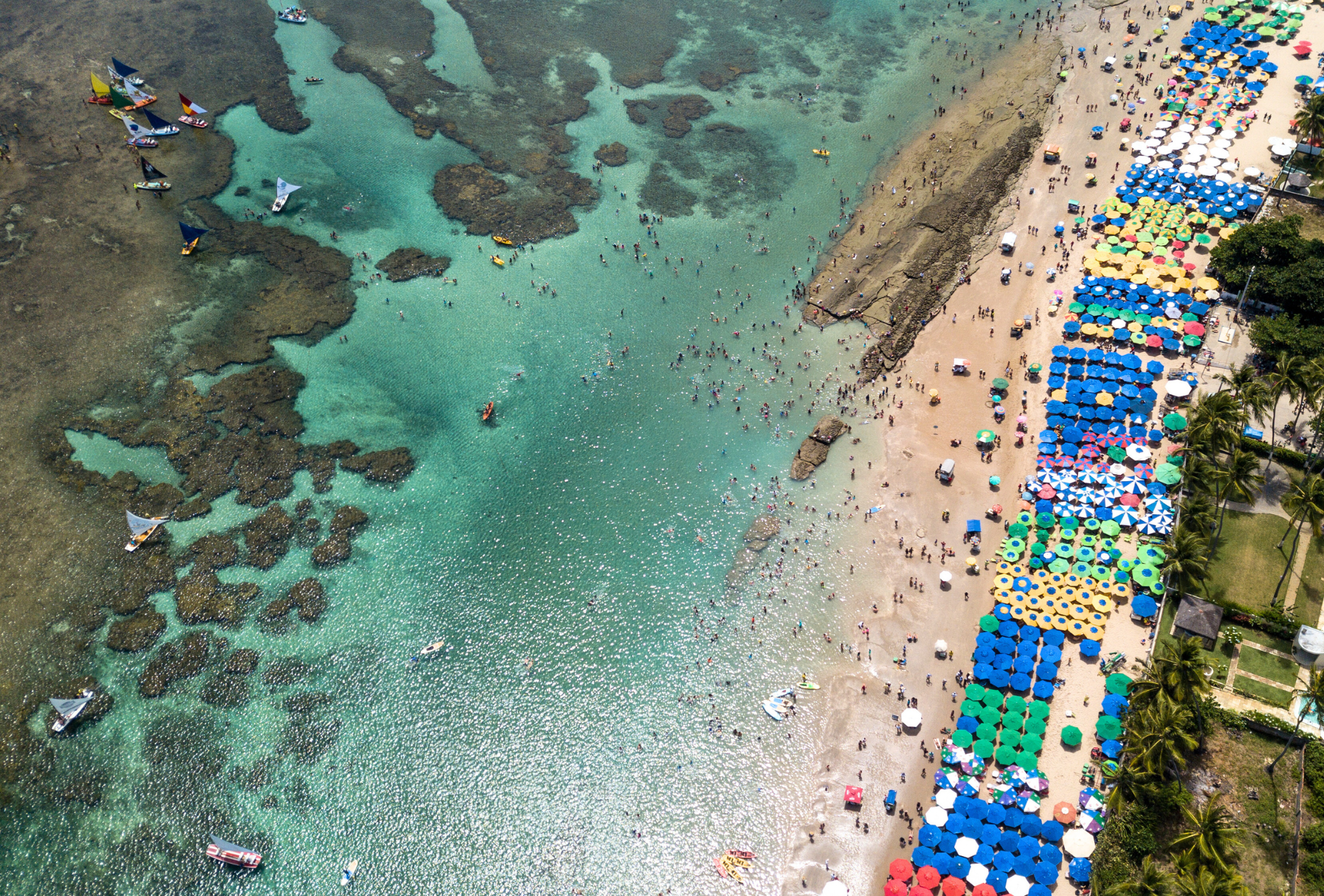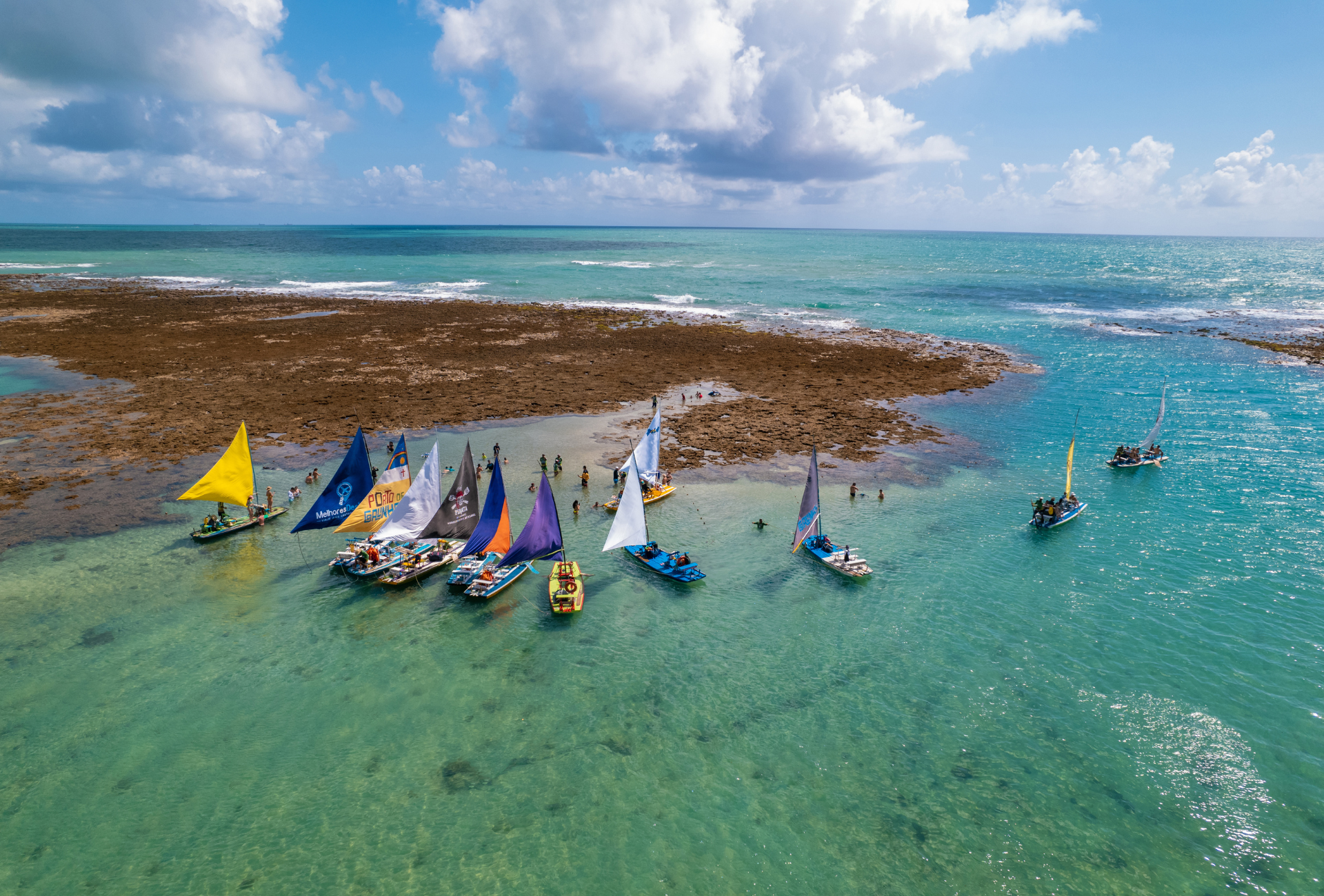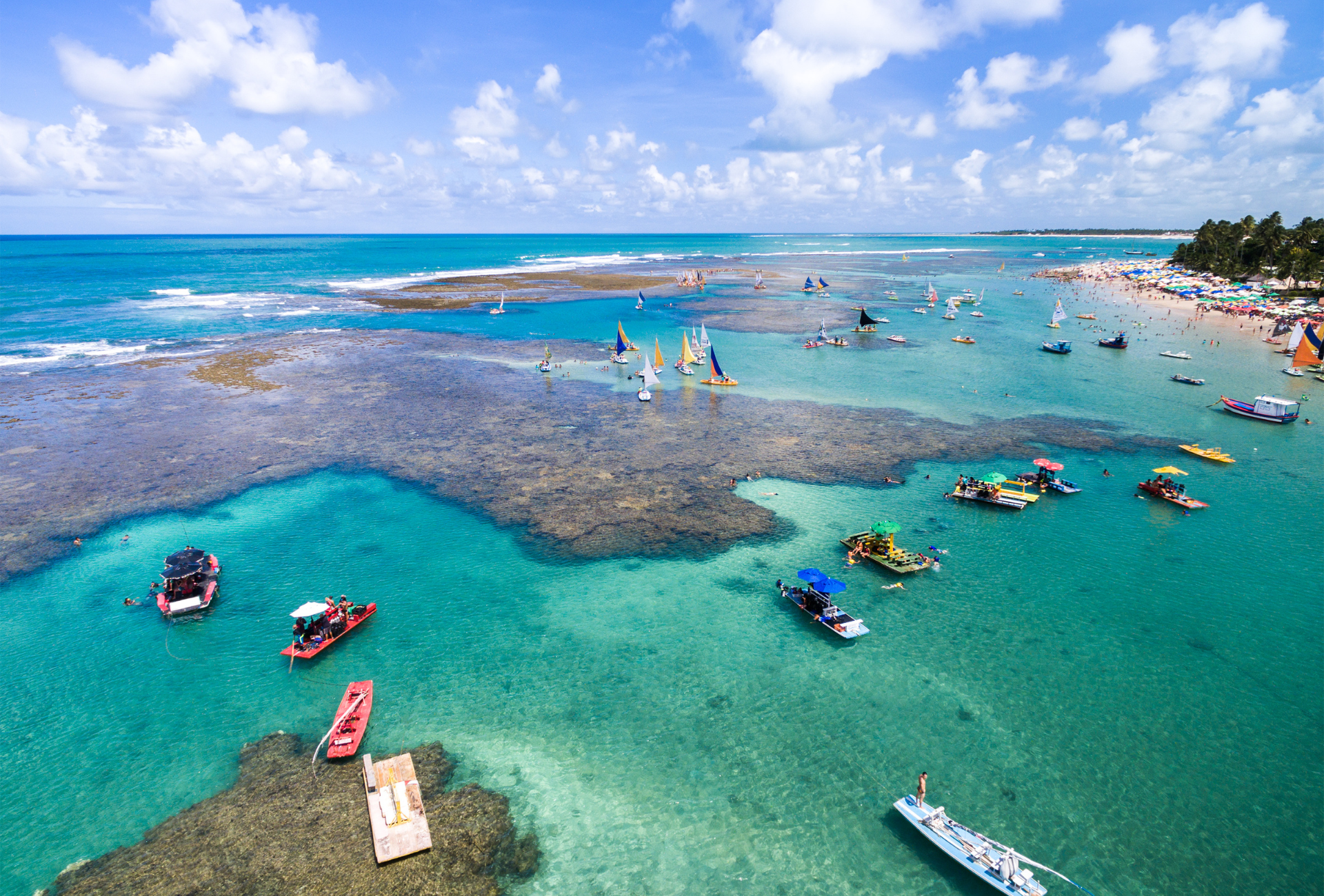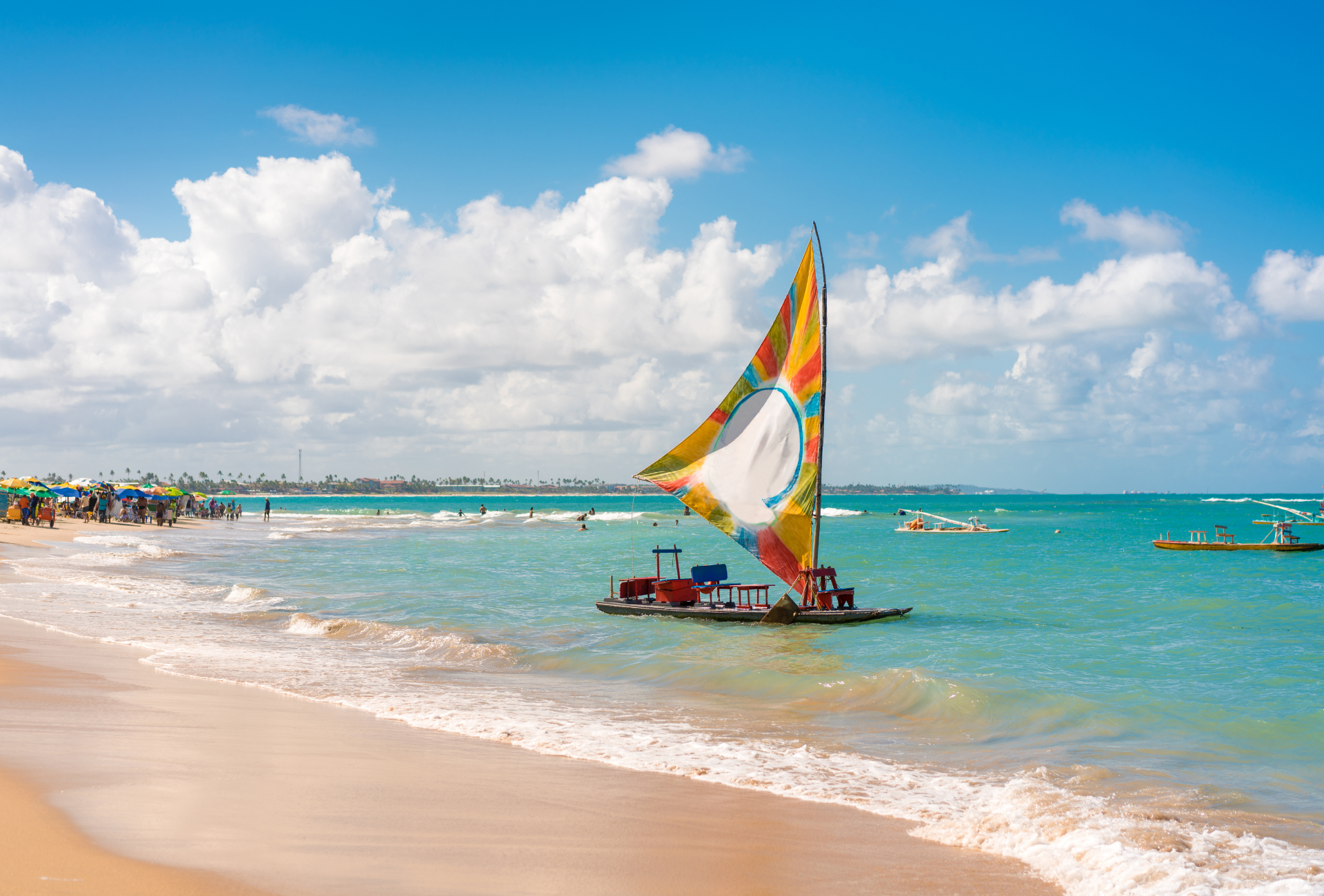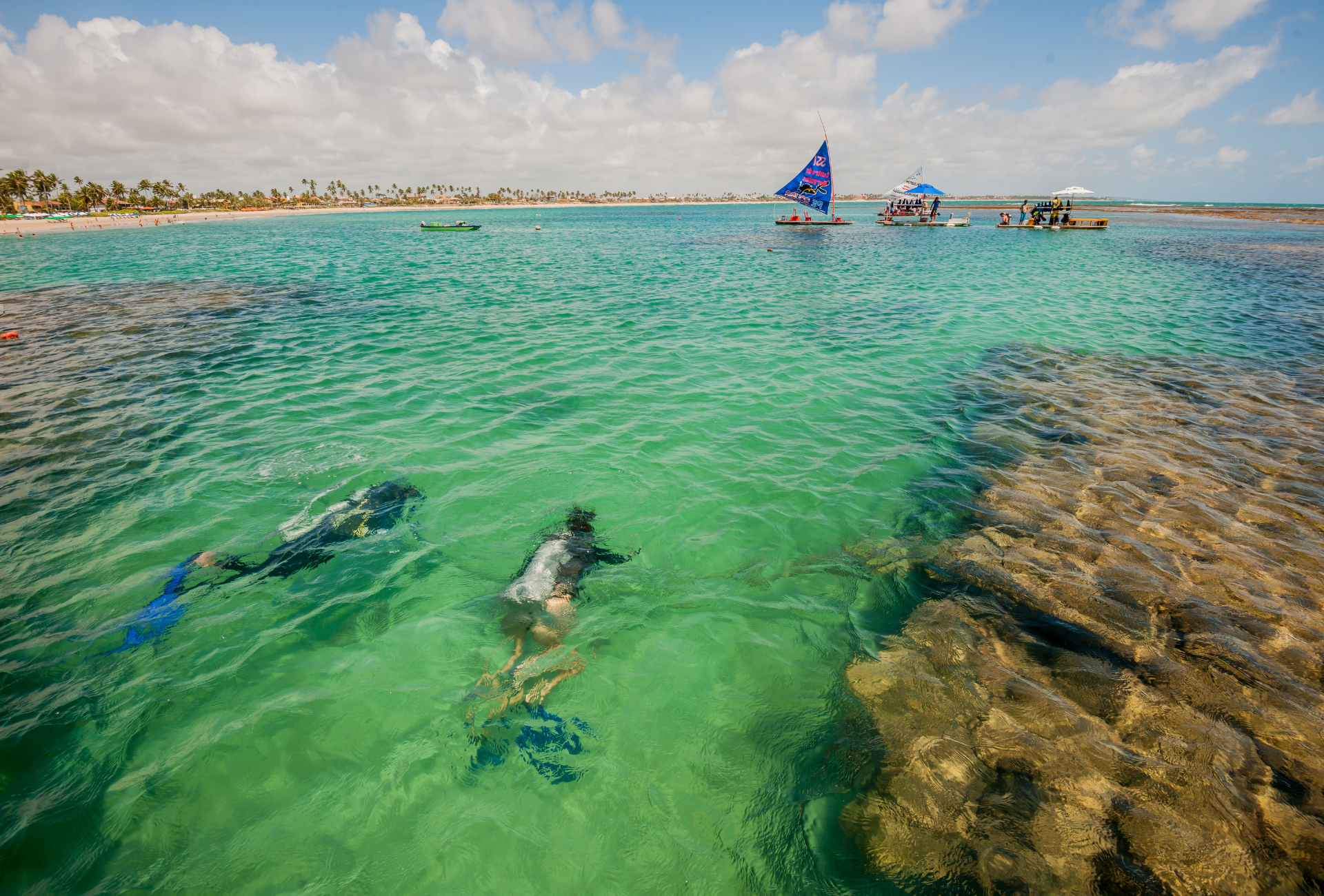Porto de Galinhas, located in the municipality of Ipojuca, in the state of Pernambuco, is a famous and paradisiacal beach recognized nationally and internationally for its lush coastline.
In the village located about 50 km from Recife, the state capital, it is possible to find white sand beaches and crystal-clear waters, framed by coconut trees, in addition to natural pools formed by coral reefs. This incredible scenario has made the region famous for its diversity of natural beauty.
Fun facts

Porto de Galinhas has been chosen several times as the best beach in Brazil.

During certain times of the year, especially between December and April, it is possible to see sea turtles in the waters of Porto de Galinhas.

Porto de Galinhas is home to a seahorse preservation project called Projeto Hippocampus, which aims to protect and study this endangered marine species.
Natural pools and corals that enchant.
The name “Porto de Galinhas” refers to the boxes in which guinea fowl were transported, a disguised way of bringing enslaved people to the country during the colonial period. Currently, it is a region that preserves its culture and history, in addition to being an internationally recognized tourist destination.
The beach offers a wide range of activities, such as raft trips, diving to explore the natural pools allowing visitors to swim in clear waters and observe colorful marine life, as well as the famous buggy rides.
It is also worth exploring the region around the beach to discover the wonders that nearby Porto de Galinhas has to offer. For example, Praia de Muro Alto, approximately 3 km long, is a favorite one among those looking for a trip with comfort and luxury. Its entire coastline is bordered by a large complex of hotel and residential resorts. Paradisiacal, the beach is formed by a large natural pool, located on an extensive coral reef. Its calm, warm and crystal-clear waters allow you to observe the colorful fish and turtles that pass by.
At Serrambi Beach, the tranquility is what attracts visitors’ attention. Its shoreline is divided into a stretch of open sea,
and another protected by coral reefs and, for much of the year, the beach has clear, warm waters. Visitors often use the space to rest by the sea, take long walks and enjoy the region’s incredible sunsets. On the beaches of Cupe and Maracaípe, the most popular activity is surfing, due to their choppy waters.
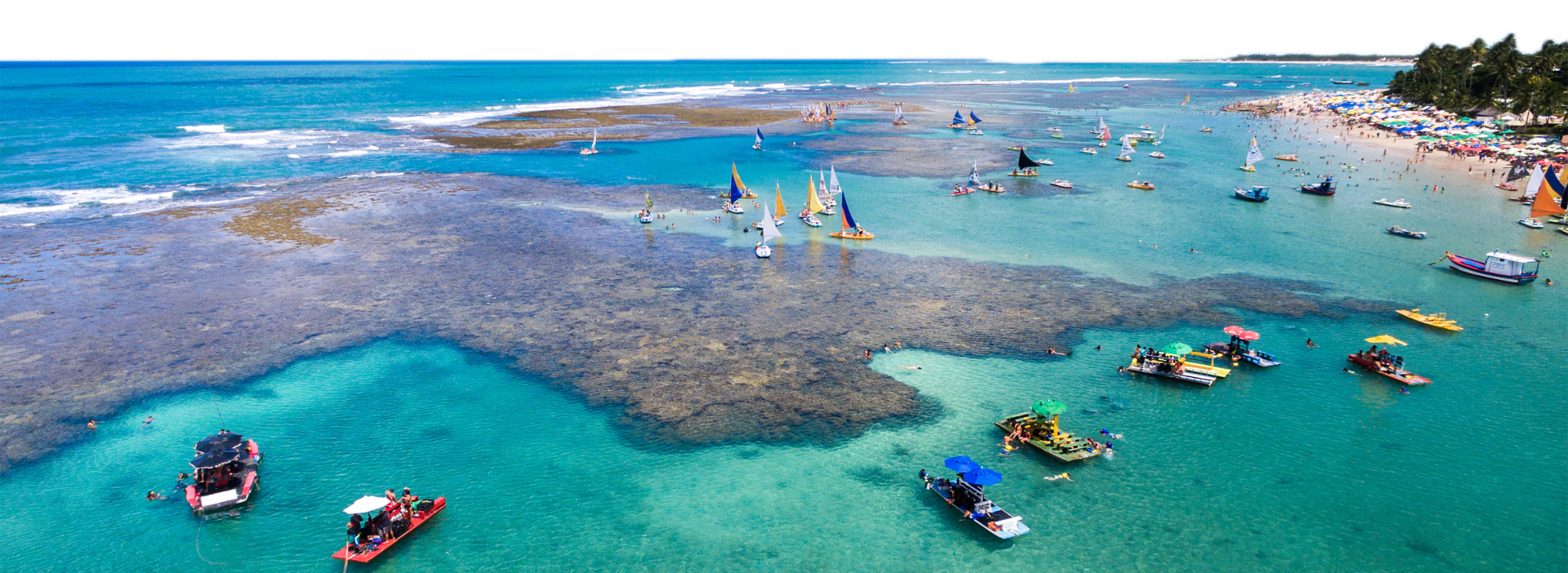

Nature and preservation in the coral paradise.
In addition to enjoying the region’s incredible beaches, visitors can also support the preservation of Porto de Galinhas’ characteristic coral reefs. Restoration projects allow tourists to “plant” the broken pieces into new structures and visit the Coral Nursery, which will grow strong and healthy.
The ecological trails also delight nature lovers, allowing direct contact with the local flora and fauna, in addition to the beautiful views.
Photo gallery
How to get there?
O Aeroporto Internacional de Recife (REC) 60 km
Main Bus Terminals


